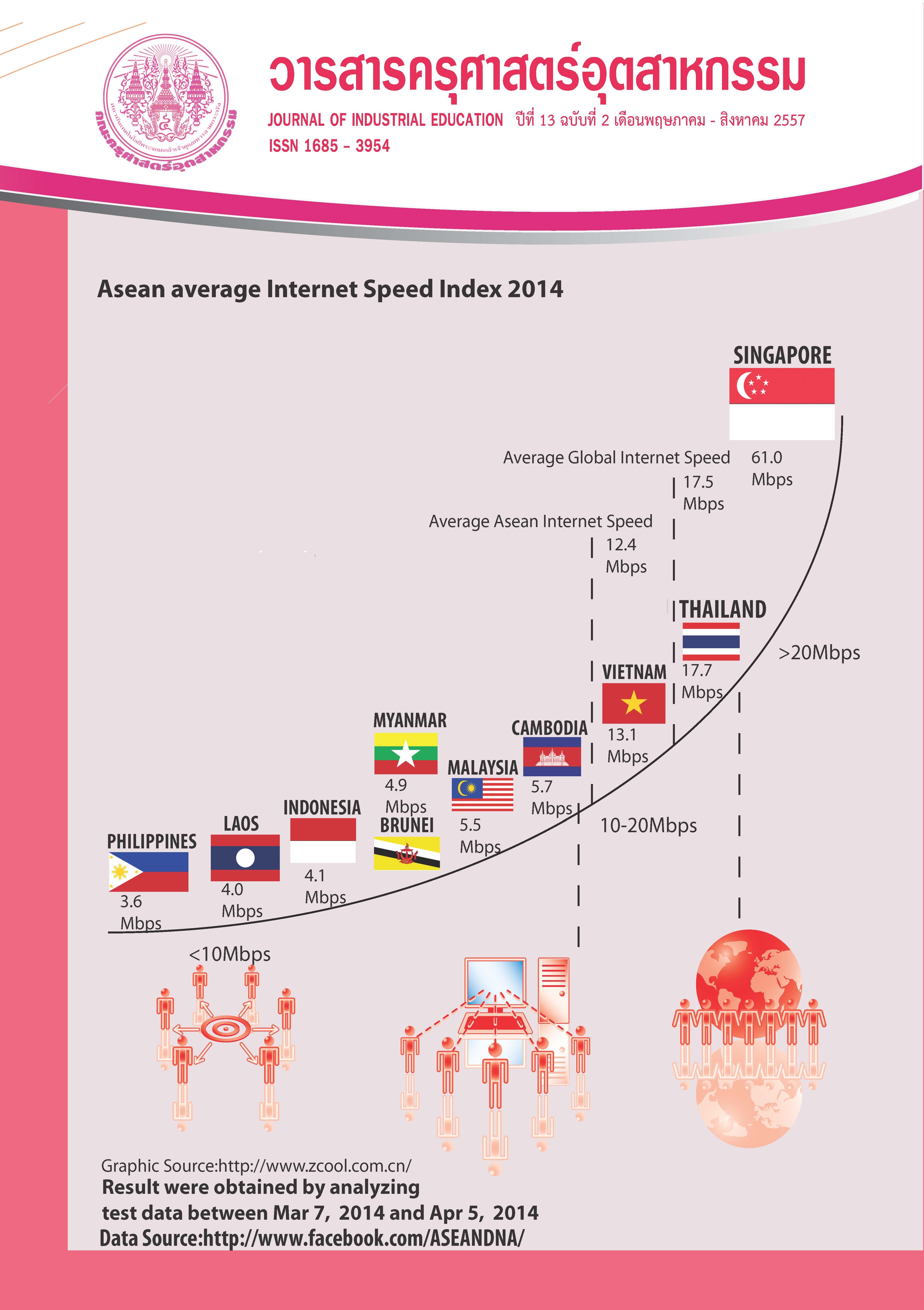A Model of Utility Perception of Quality Assurance System, Kasetsart University
Keywords:
Model, Perception, System, Quality Assurance, Kasetsart UniversityAbstract
The purposes of this research were to construct a model of utility perception of the quality assurance system of Kasetsart University and to compare pre and post personnel behaviors of utility perception of quality assurance system of Kasetsart University. The research used a one-group pretest-posttest design. The study group consisted of 43 volunteers drawn from the executives, lecturers, and practitioners of quality assurance from all faculties across the Bangkhen Campus of Kasetsart University. The research instruments were a test of information perception about the quality assurance system and a questionnaire on the utility of the quality assurance system. The statistics used for data analysis were frequency, percentage, arithmetic mean and standard deviation.
The results showed that the model of utility perception of quality assurance system was constructed which consisted of training activities integrating information and knowledge about quality assurance, particularly on the 2nd factor of quality assurance on graduate production and approaches/theories on utility perception of quality assurance system. The analysis of post-training behaviors showed that personnel had a greater knowledge of the quality assurance system than before undertaking the training. The post-training behaviors also indicated that the personnel had a greater perception of the contribution of the quality assurance system than before undertaking the training.
References
[2] รัตนะ บัวสนธ์. 2550. ทิศทางและอาณาบริเวณการประเมิน. กรุงเทพฯ: วี. พริ้นท์ (1991).
[3] พิมปุณยวัจน์ โพธิสาร. 2550. การประกันคุณภาพการศึกษา. ค้นเมื่อวันที่ 21 กุมภาพันธ์ 2553, จาก http://learners.in.th/file/phimphunyawat
[4] ปรียาพร วงศ์อนุตรโรจน์. 2553. จิตวิทยาบริหารงานบุคคล. กรุงเทพฯ: ศูนย์สื่อเสริมกรุงเทพมหานคร.
[5] วลีรัตน์ ใจสูงเนิน. 2551. การรับรู้และการใช้บริการหลักประกันสุขภาพถ้วนหน้าของประชาชน: กรณีศึกษา อำเภอพระสมุทรเจดีย์ จังหวัดสมุทรปราการ. วิทยานิพนธ์ปริญญาวิทยาศาสตรมหาบัณฑิต สาขาวิชาวิทยาการสังคมและการจัดการระบบสุขภาพ บัณฑิตวิทยาลัย มหาวิทยาลัยศิลปากร.
[6] วิรัช สงวนวงศ์วาน. 2554. การจัดการและพฤติกรรมองค์การ. กรุงเทพฯ: เพียร์สัน เอ็ดดูเคชั่น อินโดไชน่า.
[7] Katz Robert, L. 1990. Managing you most Important Asset. อ้างใน นพพนิต ภาระกุล. 2549. ภาพลักษณ์ของธนาคารไทยธนาคาร จำกัด (มหาชน) ในความคิดเห็นของผู้ใช้บริการ. รายงานโครงการเฉพาะบุคคลปริญญาวารสารศาสตรมหาบัณฑิต สาขาวิชาการบริหารสื่อสารมวลชน คณะวารสารศาสตร์และสื่อสารมวลชล มหาวิทยาลัยธรรมศาสตร์.
[8] จิตติพร ไตรทาน. 2549. ความพึงพอใจและการรับรู้ของผู้เข้าอบรมต่อสื่อเพื่อการประชาสัมพันธ์ของเทคโนธานี มหาวิทยาลัยเทคโนโลยีสุรนารี. วิทยานิพนธ์ปริญญาศึกษาศาสตรมหาบัณฑิต สาขาวิชาเทคโนโลยีการศึกษา บัณฑิตวิทยาลัย มหาวิทยาลัยเกษตรศาสตร์.
[9] วุฒิชัย อารักษ์โพชฌงค์. 2554. อิทธิพลของการรับรู้ทัศนคติและการมีส่วนร่วมที่มีต่อประสิทธิภาพการดำเนินงานของบุคลากรสายสนับสนุน มหาวิทยาลัยในกำกับของรัฐตามระบบคุณภาพภายใน. วิทยานิพนธ์ปริญญาศิลปศาสตรมหาบัณฑิต สาขาวิชาการจัดการภาครัฐและภาคเอกชน บัณฑิตวิทยาลัย มหาวิทยาลัยศิลปากร.
[10] กิจจา ไชยทนุ ผดุงชัย ภู่พัฒน์และปานเพชร ชินินทร. 2555. การศึกษาผลการดำเนินงานการประกันคุณภาพของมหาวิทยาลัยเทคโนโลยีราชมงคล. วารสารครุศาสตร์อุตสาหกรรม. 11(2), น.215-221.
[11] Ming, Cheng. 2010. Audit cultures and quality assurance mechanisms in England: A study of their perceived impact on the work of academics. Teaching in Higher Education, 15(3), pp.259-271.
Downloads
Published
How to Cite
Issue
Section
License
"The opinions and contents including the words in papers are responsibility by the authors."
"ข้อคิดเห็น เนื้อหา รวมทั้งการใช้ภาษาในบทความถือเป็นความรับผิดชอบของผู้เขียน"



